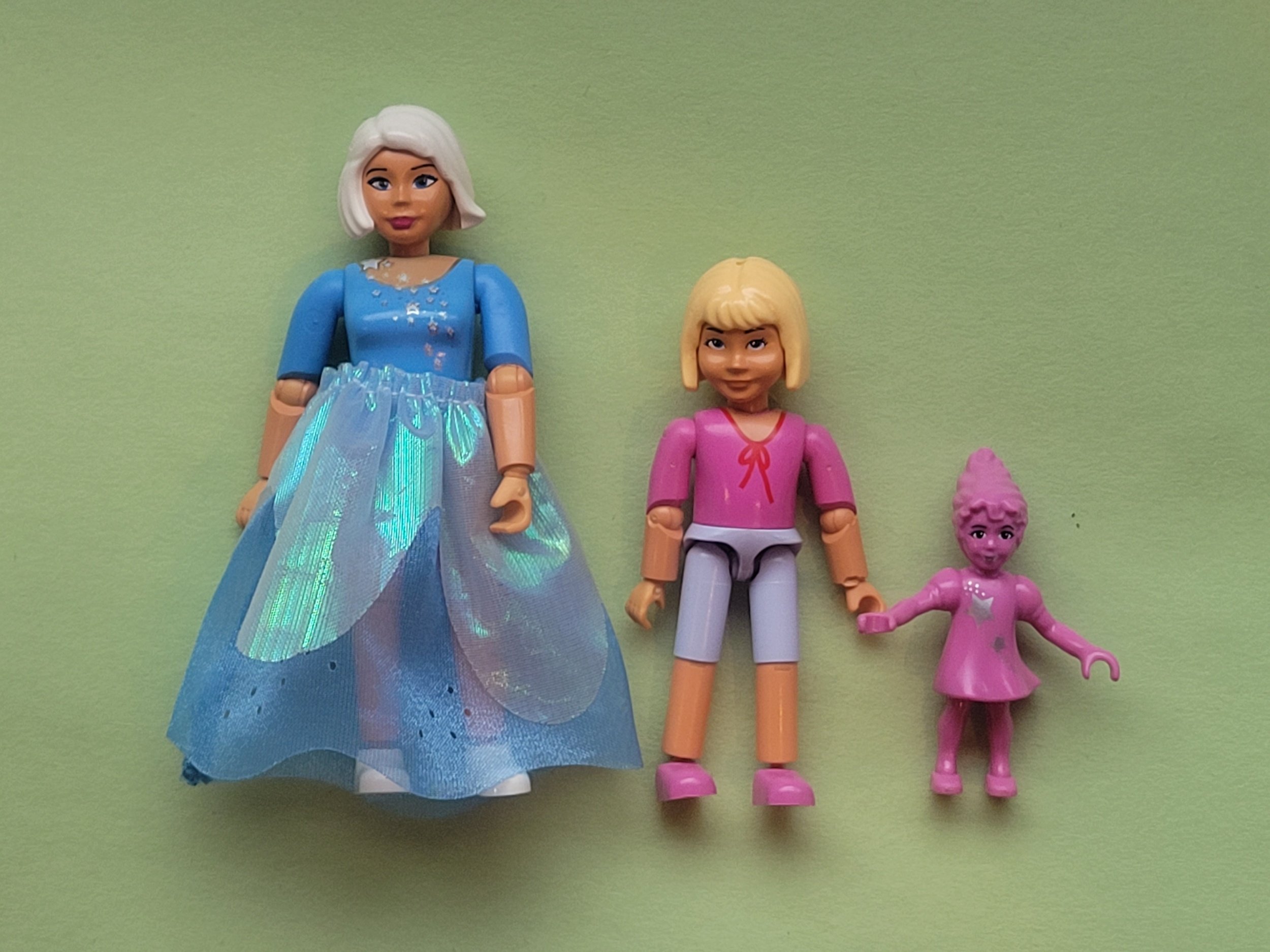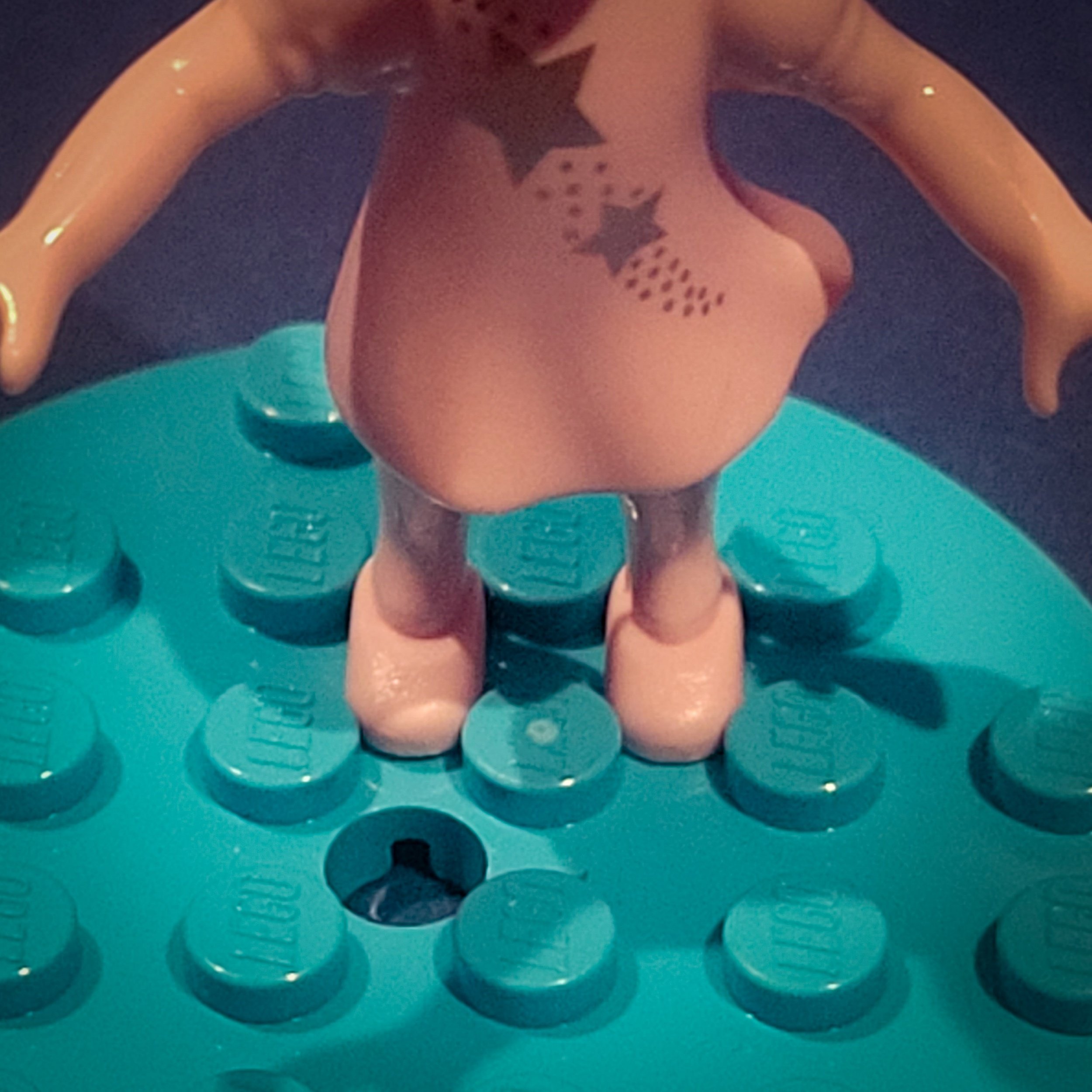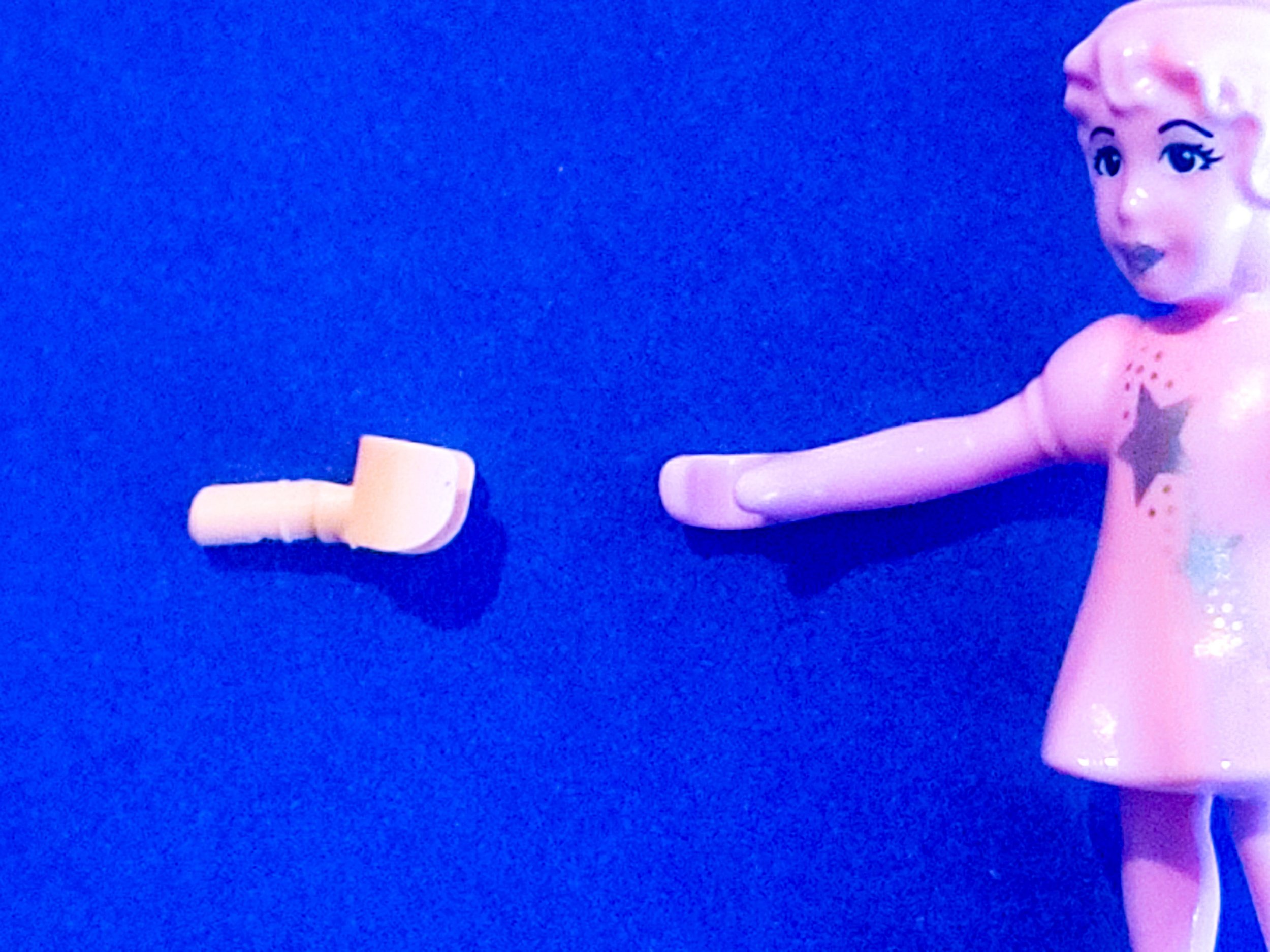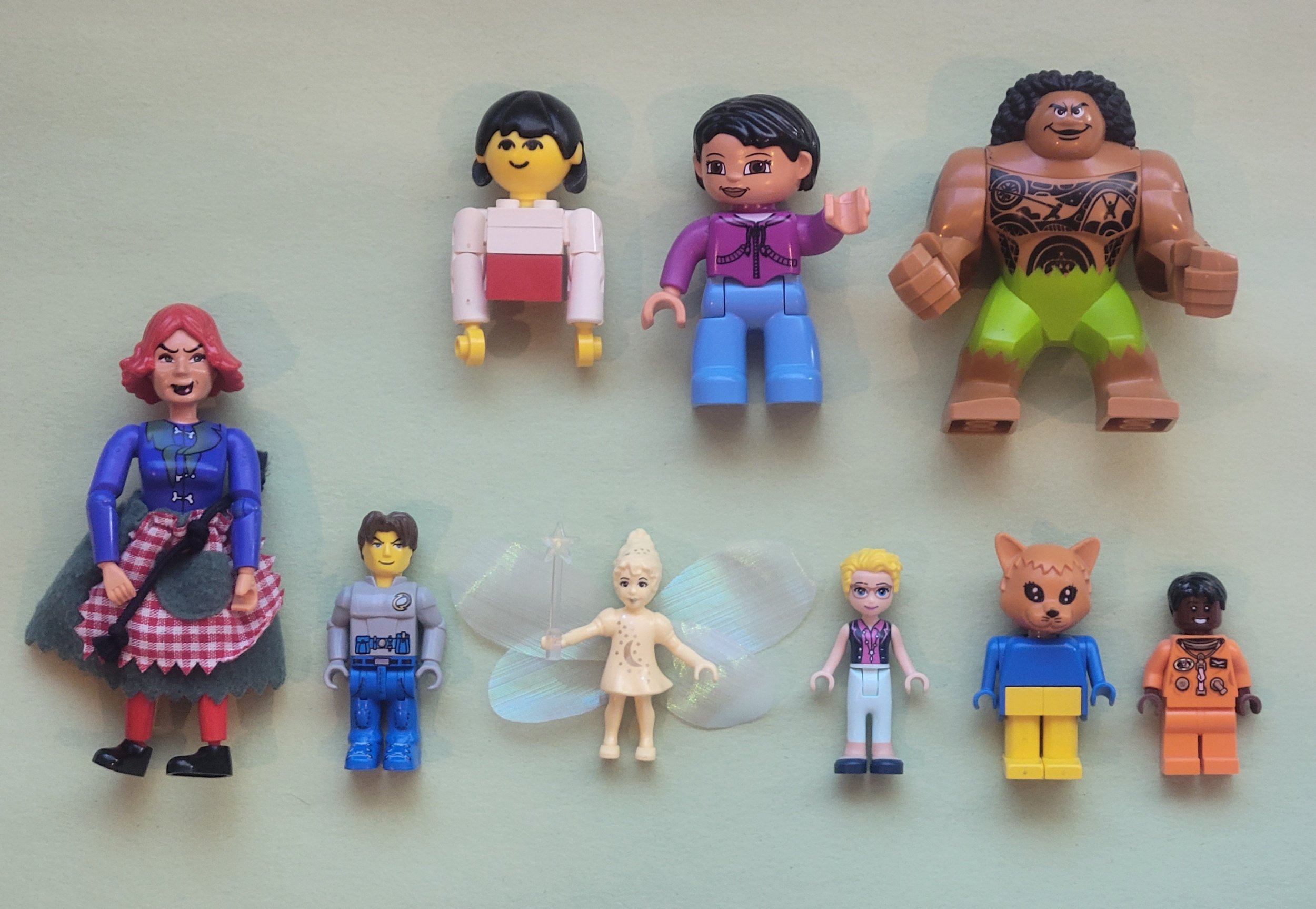Guys and Dolls: The Beautiful Failure of Belville Figures
/LEGO minifigures come in many shapes and sizes. For example in the photo below, we see long-legged Woody, wide-bodied Hagrid (with Technic pinned arms), big-headed Ned Flanders, and a double-high Garmadon. These are only a few of the outliers. A minifig is a usually standard item, these exceptions notwithstanding.
See that pirate on the left? He’s your standard kind of minifig coming in at four bricks tall. Though with the mid-height legs and short legs, even that can change. The tiny nanofigs and microfigs, also known as game pieces and trophy figs, pictured here, are smaller still. And on the other end of the spectrum you have bigfigs like the Hulk and digifigs like the new Mario.
But all of these examples are modern ones. Let’s take a trip back through time to explore a different kind of LEGO figure, known as “the Belville doll”. Warning: I’m going to get distracted along the way!
The Beauty of Belville
LEGO designed Belville “to appeal to the girl market” before transitioning to the Friends line, which is celebrating its tenth successful year. The Belville theme is [not commonly referred to at all, but when it is, it is] commonly referred to as “a failure”. The theme persisted, however, for fifteen years. This stretch of time started well before The LEGO Group’s financially troubled period and continued well past the group’s restructuring. Such a long tenure implies that Belville was some sort of a success even though it was only distributed in limited markets.
LEGO is known to churn through themes quite quickly, and they would not keep something around for a decade and a half if it didn’t meet some sort of internal benchmark. (For example, look at the Scala theme that came and went quickly and ran concurrently with Belville for a few years there.)
In future articles, I will take you on a tour of tunnels in “the Belville rabbit hole” but the line is distinguished first and foremost by its unique figures. “Belville dolls” aren’t actually minifigures or minidolls at all. They were meant to approximate the “dollhouse” experience. They do, however, work in “the system” even if perhaps not at first glance. (That’s a different tunnel for another day.)
We begin with these three examples of Belville dolls. Within the theme there were several humanoid figures: there were adults and children, both males and females… and a fairy.
Belville dolls are often categorized as “creepy”. For your comfort, I have chosen “the least creepy” of the dolls for the photo above which includes an adult female (Stella) and a child (sometimes known as Pamela). Personally, I adore the fairy (Millimy), but you are free to assign your “creep quotient” as you see fit. There are legitimate arguments to be made. (Though I wouldn’t get on the wrong side of Pamela.)
Cute? Creepy? “Why Not Both?”
There are two eras of Belville dolls. The first dolls were incredibly posable, but somewhere along the line (and it’s negotiable), the arms lost the ability to bend at the elbow.
The early dolls could be pulled apart fairly easily. Here, we see a doll who has been drawn and quartered after being accused of witchcraft (because she is a witch). All of the early Belville dolls could be rent asunder. (We can explore these details in a later article… if you’re not creeped out already.)
Being able to be torn asunder possibly led to a lot of consumer complaints. Each time the doll was pulled apart, it grew weaker. Many times in bulk lots I come across limbless early dolls. I also bet some babies tried to swallow some of the pieces. Also, perhaps it was cheaper to produce dolls with fewer joints. (These dolls could not have been cheap to produce with at least nine molds plus printing.) In any event, after the limb switch you couldn’t even pull the foot off a Belville doll, let alone scalp her.
(Which I totally tried on that witch doll… Really not creepy at all [proceeds to save photo for an upcoming Halloween article].)
You know what’s creepy by all metrics? These babies. Their motionless contorted bodies. Their wide-eyed looks of terror frozen on their giganto-heads. That pirate minifig next to them is ready to walk the plank rather than babysit in Belville. I don’t blame him. Let’s move on from the babies, please!
Millimy the Missing Link
I have featured this fairy in several pictures already and on my social media. Her name is Millimy, which doesn’t ring any bells in the history of LEGO - or in the history of anything.
As far as I can tell, Millimy is not based on anything in pop culture or history, and even though she appears in many incarnations and colors in the many eras of Belville, she is only formally referred to by name in one set. As far as I can tell, she has absolutely no back story and the name is never uttered anywhere again. (One of her versions is “Thumbelina” but she has different wings. That’s another tunnel for another day.)
In any event, I think Millimy the fairy is awesome… even though her figure has no articulation, her foot connection to the system is tenuous (perhaps “illegal”), and her small hands can hold a bar with only a weak grip. Whatever. She’s adorable.
Also, perhaps, I admit, she is possibly creepy. These figs do not feature consistent face painting. I have noticed individual fairies of the same type to have… their own… um… “personalities”.
I’ve pictured Millimy here beside a minidoll so you can see what I see.
If you look at the timeline, Millimy is “the missing link” between the Belville doll and Friends minidolls, which appeared only a few years after Belville wrapped up. Minidolls are also chastised for their lack of articulation, compared to minifigs, but you can see that they are an evolution (and improvement) from the dolls and fairies who came before.
And talking about non-movement evolution, even though Sewer Baby tries, neither he nor the new (adorable) Friends microdoll can be anywhere near as creepy as those Belville babies!
Size Matters
So, how do Belville dolls size up, compared to the standard minifig? I tried to collect samples of all* kinds of LEGO figures for comparison. Below, we see a Homemaker doll, a Duplo doll, a bigfig, a Belville doll (before the witchcraft trial), Jack Stone, Millimy, a Friends minidoll, a Fabuland fig, and a standard minifig. That’s a real smorgasbord!
But wait. There's more! I forgot: technic also had a line of figures. Here, you can see him, doing his technic thing.
Like Belville, Technic dolls were wonderfully flexible. Here is an image from the Belville community playhouse’s production of “The LEGO Matrix” to illustrate. (Should I have taken the blue pill?)
OK: So, below is the new lineup. You can see that Technic doll fits squarely between the child and adult Belville dolls in height.
Ah, but I forgot! I didn’t include an actual failure: Galidor. I had to buy one to see for myself, and omg! He's huge!
Nick Bluetooth dwarfs the Belville adult, Primo boy, Juniors girl (Tina, who is the same size as Jack Stone), and a standard minifig.
Speaking of huge, what about that other failed line? You know, LEGO’s attempt at Barbie called Scala?
Well, a Scala girl is not as tall as a Barbie (or even Skipper), but she sure is a stretch. (I believe there is also a Scala woman, but I was unable to procure a model for myself. These failed lines are hard to find, mostly only available in Europe, and mostly beyond my budget.)
Is Bigger Better?
At this point, you’d think I was done… but I didn’t mention Duplo. I don’t have the vintage/basic Duplo fig, but the Duplo figures have shown a real standard of consistency, like minifigs— Oh wait. Have you heard about Duplo dolls?
Did somebody call Belville “creepy”? This girl looks straight out of “Squid Game”. I do NOT want to play Duplo “red light, green light”, thank you.
Duplo dolls are very hard to find (at a reasonable price). The dolls above, from two sets, were the best that I could do. The big and small dolls in the same set would look and be dressed the same. The big doll puts the little one in a high chair, or a pram. It’s really quite a conundrum to contemplate a real baby playing with a baby playing with baby.
Below you can see the Duplo lineup plus Millimy. See how not-creepy the fairy is, by comparison?
I had briefly mentioned Primo, but I didn’t mention “constraction”. These buildable figures come in a range of sizes, but it’s a limited range. Second from the right below is the Karzon construction figure from Knight's Kingdom II.
Star Wars had a lot of constraction figs. I had already dismantled my own for parts, but Jyn Erso’s head seemed to be around the same scale as Karzon’s, if not a little bigger. (Totally not creepy at all.)
In summary: Belville dolls are both amazing and maybe a little creepy. (And you better believe this is not the last you’ll hear of them!) And as a side project, we’ve been able to compile a mostly complete roundup of humanoid LEGO figures. (Not including brick-built creations, alarm clocks, flashlights, other gear, wooden novelties, etc.) From smallest to largest LEGO figures, we have the following:
Trophy fig (nano fig), System baby, game fig (microfig), Friends microdoll, Belville baby, standard LEGO minifig, Belville fairy, Friends minidoll, Fabuland figure, basic/vintage Duplo figure (estimate), Juniors/Jack Stone figure, Duplo doll baby, Homemaker figure, modern Duplo figure, bigfig, Belville child, Primo figure, Technic doll, Belville adult, Scala girl, Duplo doll, (I’ll guesstimate that a Scala adult fits here,) “constraction” figure, and Galidor. Whew!
It’s quite a party. Was anyone not invited?
Best of BrickNerd - Article originally published February 8, 2022.
Are Belville dolls creepy? Did we miss any size of LEGO figure? Let us know in the comments below.
Do you want to help BrickNerd continue publishing articles like this one? Become a top patron like Marc & Liz Puleo, Paige Mueller, Rob Klingberg from Brickstuff, John & Joshua Hanlon from Beyond the Brick, Megan Lum, Andy Price, Lukas Kurth from StoneWars, Wayne Tyler, LeAnna Taylor, Monica Innis, Dan Church, Roxanne Baxter, and Steven Laughlin to show your support, get early access, exclusive swag and more.




































